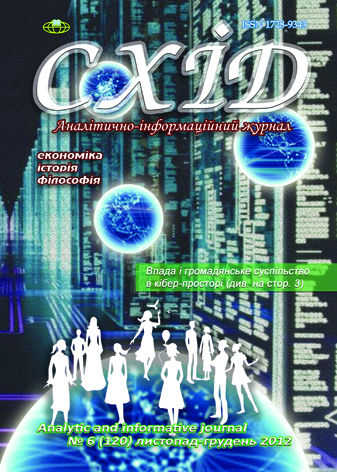Morality, law, freedom of social utopias T. More and T. Campanella
DOI:
https://doi.org/10.21847/1728-9343.2012.6(120).16712Keywords:
society, the person, the social ideal state of happiness, freedomAbstract
The utopian view of social reality in the Renaissance. These views occupy an important place in the history of philosophy. The problems of social life and interaction of persons in such idealized societies, and vision of society as implementing social ideal. We investigate the idea of social benefits realized through justice in its specific sense, the desire of the human spirit to the happy life of their own dreams.
Downloads
References
Hankins J. The Cambridge Companion to Renaissance Philosophy / J. Hankins. - Cambridge University Press, 2007. - 452 р.
Schmitt С. The Cambridge History of Renaissance Philosophy / С. Schmitt. - Cambridge University Press, 2007. - 922 р.
Горфункель А. Х. Философия эпохи Возрождения / А. Х. Горфункель. - М. : Высшая шк., 1980. - 368 с.
Кампанелла Т. Город Солнца / Т. Кампанелла. - М. : Мысль, 1954. - 216 с.
Мор Т. Утопия / Т. Мор. - М. : Academia, 1935. - 270 с.
Рассел Б. История западной философии в её связи с политическими и социальными условиями от античности до наших дней : в 2-х тт. / Б. Рассел. - Новосибирск : Изд-во Новосибирского ун-та, 1994.
Реале Дж. Западная философия от истоков до наших дней : в 4-х тт. / Дж. Реале, Д. Антисери. - СПб. : Петрополис, 1994-1998.
Реизов Б. Г. Итальянская литература XVIII в. / Б. Г. Реизов. - М. : Мысль, 1966.
Downloads
Published
How to Cite
Issue
Section
License
Copyright (c) 2013 Tetiana Pavlova

This work is licensed under a Creative Commons Attribution-NonCommercial-NoDerivatives 4.0 International License.
1. Authors bear responsibility for the accuracy of facts, quotations, numbers and names used.
2. Manuscripts are not sent back.
3. The publisher does not always agree with the authors' opinion.
4. The authors reserve the right to authorship of the work and pass the first publication right of this work to the journal under the terms of a Creative Commons Attribution-NonCommercial-NoDerivatives 4.0 International License. This license allows others to distribute (copy) the published work for non-commercial purposes, provided there is mandatory attribution to its authors and a link to the first publication in our journal.
5. The authors have the right to conclude separate supplement agreements that relate to non-exclusive work distribution in the form in which it has been published by the journal (for example, to upload the work to the online storage of the journal or publish it as part of a monograph), provided that the reference to the first publication of the work in this journal is included.

